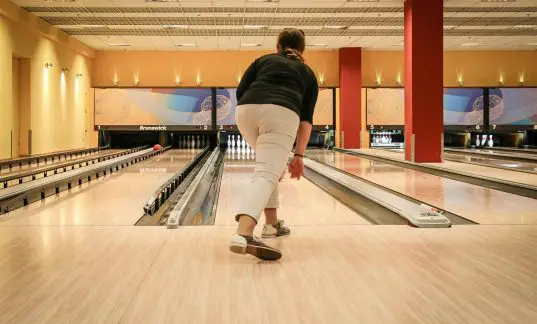Did you know that your local bowling alley is carrying on a tradition that has spanned multiple millennia? The history of bowling is long, interesting, and full of amazing twists and turns.
From Ancient Egypt through the Roman Empire, and withstanding the ire of King Henry III on its way to becoming one of the most played sports in the world today, bowling has taken a turbulent road over thousands of years to get here.
When and why was bowling invented?
Before the National Bowling Association and the Professional Bowlers Association, there were the halls of Ancient Egypt.
In the 1930s, British anthropologist Sir Flinders Petrie unearthed a simple bowling set in a child’s grave — an astonishing record of a primitive bowling game! The grave dated back over 5,000 years before the Ladies’ Pro Bowlers Tour or modern bowling lanes were even a gleam in the universe’s eye.
After Petrie’s astonishing discovery, the sport of bowling has had quite the time in the limelight in the anthropological community. Hieroglyphics and art pieces have been discovered which depict early bowling games played by the people of Egypt. And recently, University of Pisa professor Edda Bresciani came across an ancient building 90 miles south of Cairo that appears to be one of the world’s first bowling alleys!
For Ancient Egyptians, bowling likely wasn’t the ten-pin game that has led to a league bowling boom all over the world. But, the invention of bowling likely had a simple aim that we all can relate with — to simply have fun knocking things down with friends.
A bowling ball and some pins are the perfect recipe for bringing people together.
Who invented modern bowling?
Per German historian William Pehle, the modern concept of bowling is a German creation dating back to 300 CE. However, their version of bowling didn’t include bowling balls, ten-pin bowling, or a shiny bowling lane.
Rather than a ball, most Germans used a rock to knock down kegels (wooden pins used to protect themselves and play with) in hopes of absolving their sins. Of all the ways to find salvation, a bowling competition sure does seem like the way to go!
Where did the term bowling come from?
It’s not quite certain, with historians pointing to Latin, Old French, and Saxon words as possible sources for its genesis.
However, the going theory is that the word is German in origin. Knowing where the history of the modern sport got its start, that makes perfect sense!
How did bowling gain in popularity?
As time went on, new categories of the sport of bowling began to crop up in other parts of Europe. While the introduction of bowling to English shores is a topic of much debate the first evidence of lawn bowling lanes dates all the way back to 1299 in Southhampton. Bowling green after bowling green cropped up in England in the early 14th Century, drawing the ire of King Henry III.
Why? Well, bowling distracted his soldiers from their archery practice! Bowling pins were cooler than arrows, it appears.
King Henry III’s decision to ban bowling is the first official historical account of the sport of bowling. It still had a long way to go towards becoming the tenpin game we know and love, and there were plenty more royal obstacles to come.
In the 1400s, legal bowling returned to England. And it was then that the modern bowling alley started taking shape.
When were bowling alleys invented?
Before bowling balls had finger holes and reactive coverstocks, lawn bowling was all the rage in England. But, the rain tended to put a damper on things.
In the 15th Century, lawn bowling lanes received a makeover to help with this. Roofs were placed over lawn bowling lanes to keep the games going when the weather got dicey. Although bowling alleys were technically a thing well before this in Egypt, this was the birth of the modern bowling alley. And, it was lots of fun for people of all ages and classes.
However, another king got in the way of the people’s enjoyment.
Come 1511, King Henry VI banned bowling from the lower classes in the attempt to mark it as a sport for wealthy aristocrats. It didn’t quite work out that way as the years progressed, although King Henry VIII did take time from being a ruthless ruler to bowl with regularity.
As time progressed, versions of bowling began to spring up throughout Europe. Some games had just three pins. Others used nine pins or ten pins. Some even used as many as seventeen pins at a time! Austria, Switzerland, and other countries around the continent couldn’t get enough of bowling in one form or another.
When did bowling reach the United States?
As German, British, and Dutch folks started settling in the Americas, bowling came along with them to the shores of the future United States. The first record of bowling games in North America comes from depictions of Dutch settlers enjoying themselves in New York back in 1670.
The first bowling balls in America were made of wood, particularly lignum vitae wood and oak. Dutchmen, British immigrants, and many other European settlers in North America carved their own balls for fun in their New World.
Bowling continued to blossom as a North American sport up to, through, and after the American Revolution. Come 1819, it was mentioned for the first time in American literature in Rip Van Winkle — a classic tale written by Washington Irving. The sound of “crashing nine pins” was enough to capture Rip’s attention. It was capturing plenty of other people’s attention too.
As gambling boomed in the 1820s, betting became a staple of bowling halls around the nation. The game was temporarily outlawed in several states because of this. But, that wasn’t enough to stem the tides of an upcoming bowling boom in the United States.
What did the first American bowling boom occur?
As the 19th Century came to a close, bowling was in full boom mode. There were so many different versions of the game in every region of the country. It was getting unwieldy, to be honest.
Meet Joe Thum. His creation of the United Bowling Clubs in New York back in 1895 marked the formation of the American Bowling Congress. And as women bowlers began to join the fray en masse, a problem started to arise. After all, women weren’t allowed in the American Bowling Congress’s leagues at the time.
So, women took things into their own hands. The first national women’s bowling tournament took place in 1907. Ten years later in 1917, the Women’s International Bowling Congress (WIBC) took shape. Given time, the WIBC would become the biggest women’s sports league in the entire country.
Bowling could do very little wrong in the 20th Century United States. After the end of prohibition early in the 1930s, beer companies signed on as big-money sponsors for semi-professional and professional bowling teams.
And as television started making its mark in 1950s, bowling found its way into more people’s homes than ever before. NBC broadcasted “Championship Bowling” for the first time. And riding the wave of popularity created by this broadcast, the Professional Bowlers Association (PBA) was formed in 1958. With 4,300 members in 14 countries around the world, the PBA had and still has a powerful global reach.
ABC became the first network to showcase a PBA event early in the 1960s. And one of the PBA’s founders, Eddie Elias, worked with ABC to create the Pro Bowlers Tour — a massive moneymaking staple of the ABC lineup. Shortly thereafter, the Ladies Pro Tour pushed bowling even further into the mainstream.
It only got better for bowling in America given time. President loved it. Bowling alleys raked in cash on weekdays and weekends alike.
Bowling wasn’t just a pastime for Americans. It was truly an American sport.
And, it still is.
What does the future of bowling look like?
When bowling was first demonstrated at the Seoul Olympic Games in 1988, it felt like a watershed moment for the sport. And while bowling was left off the list for inclusion in the 2020 Olympic Games, it seems inevitable that it will find its way to the world’s premier sporting showcase.
And as for bowling on a professional level, Kelly Kulick’s victory in 2010’s PBA Tournament of Champions changed the boundaries of bowling for good. 100 years before this, women weren’t even allowed to play in men’s bowling leagues. And now, a woman took down all the best male professional bowlers in the world to win one of the world’s most prestigious tourneys.
With over 95 million bowlers in the world spanning nearly 100 different countries, bowling has a bright future ahead. And while the challenges of the COVID-19 pandemic have made gatherings at local bowling alleys quite tricky, the population’s longstanding love for the game remains intact.
Who knows where bowling goes from here? Wherever that is, we do know it’s gonna be one heck of a ride.


